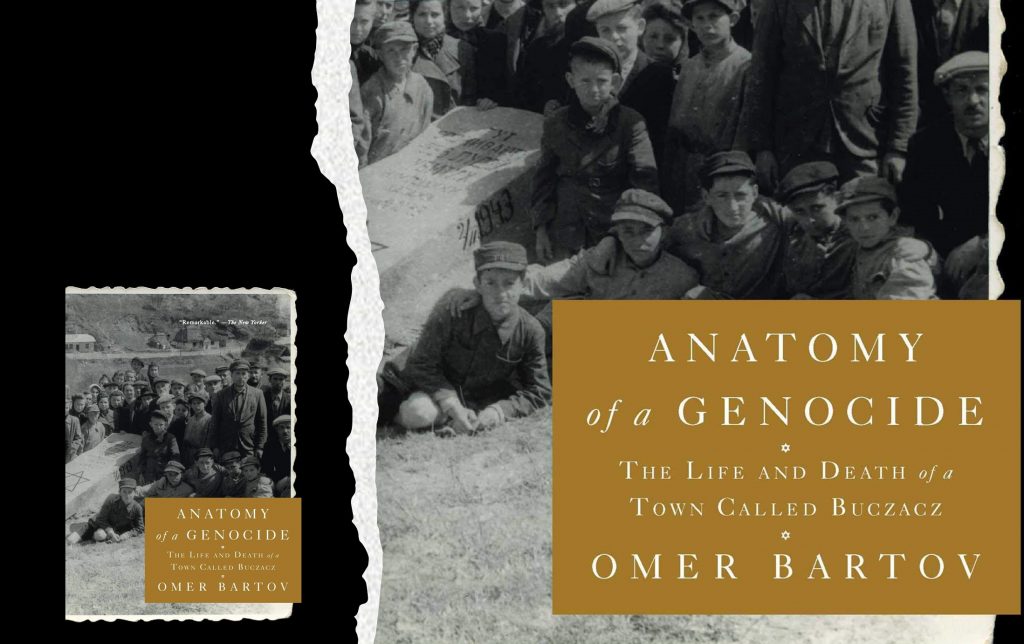Book Review: Anatomy of a Genocide: The Life and Death of a Town Called Buczacz*
This review of Omer Bartov’s book Anatomy of a Genocide: The Life and Death of a Town Called Buczacz by Vladyslava Moskalets first appeared in the quarterly journal Ab Imperio (2019. No 2. Pp. 115–122.). It is reprinted with permission.
*The author uses the Polish spelling (Buczacz) for the Ukrainian town Buchach.
History as a story without an end
Historians aspire to tell stories – even though we cannot indulge our imaginations too much. Therefore, we rely on the stories told by others, using as primary sources diaries, memoirs, interviews, along with a variety of official documents. Taken together, these multiple stories combine to produce what to a lay reader seems to be unstructured white noise. We have to form a meaningful narrative out of this white noise of information, a readable and understandable story. The basics of the historical craft that we learn as students include training in critically assembling stories from the sources as multiple voices from the past that themselves represent selective and partisan constructions. Even in our post-postmodern times, most historians agree that we tell our stories not for the sake of entertainment but to elucidate specific human choices and past developments, and to ask important questions on behalf of our generation. We fill in factual gaps that prevent finding meaningful answers and better understanding the past, especially the past that persists into the present and causes uncomfortable feelings of responsibility, guilt, or dependence. Modern history is especially challenging in this regard, for it continues to inform our life today. Although we have too many historical “voices” at our disposal, they tend to tell their own stories and do not provide ready answers to the questions that we consider important.
The recent book by Omer Bartov Anatomy of a Genocide: The Life and Death of a Town Called Buczacz is one of the most intriguing and promising attempts to find some of these answers. The result of years of thorough work with numerous sources in different languages, the book is destined to have special resonance in Ukraine. Since 2007, the year of publication of his earlier book Erased, Bartov’s name has become firmly associated with the claim that the memory of the Jewish presence in Ukrainian Galicia has been effectively erased.[1] This book was widely discussed and harshly criticized by Ukrainian readers and the professional historical community. Also inspired by his family connection to Buczacz, Bartov’s new book puts this very important debate into a new perspective and promises to generate a lot of interest in Ukraine (even though currently the book is available only in English).
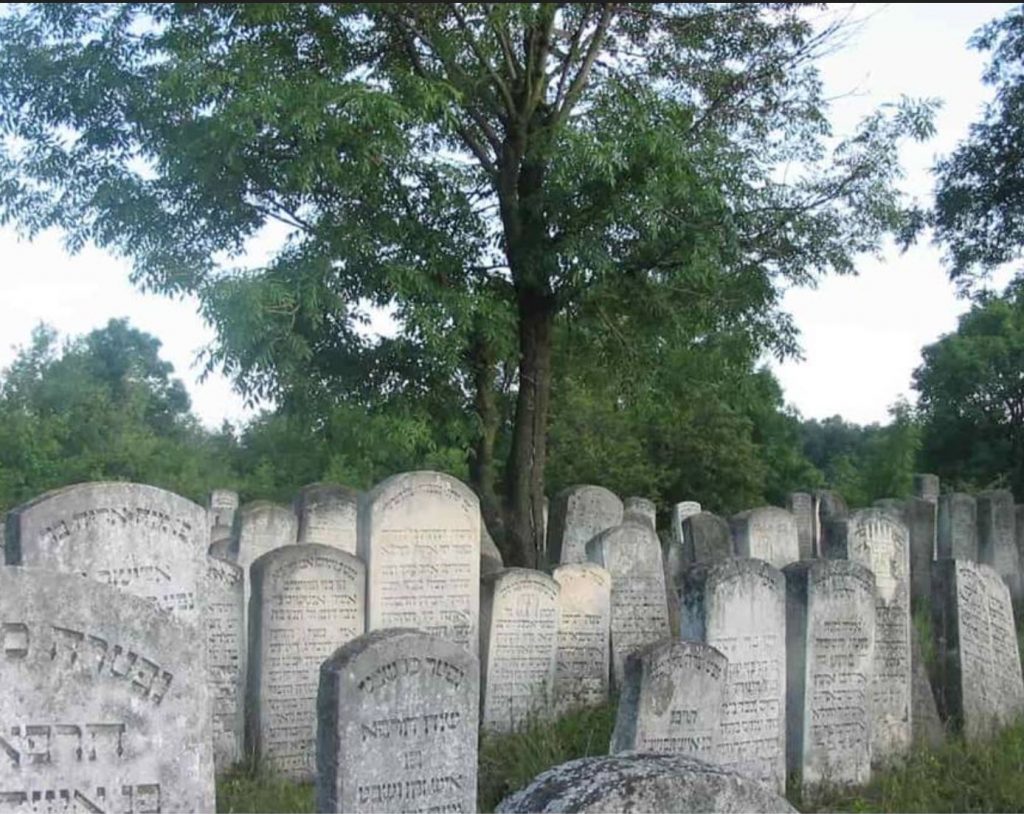
Omer Bartov is a good writer who knows how to produce an interesting and emotionally intense story. The chapters’ titles stick in a reader’s memory, and the intrigue of the narrative is captivating. The author’s tone changes from personal and emotional to academically distant, although the book is not overwhelmed with theoretical discussions. Bartov seems to consciously avoid them, although it is evident that he is well familiar with important historiographical debates in his field and he references them implicitly. An academic reader can read the book as a professional history, and a lay reader – as a good story. In this regard Anatomy of a Genocide has already proved a success: it has received good academic reviews and positive popular feedback on internet platforms such as Goodreads and Amazon, scored several professional prizes, and continues to stimulate productive discussions. As a university lecturer, if I will include Holocaust themes in my courses, I plan to assign Bartov’s book as one of the most profoundly written studies on Galicia. At the same time, as a student of the Jewish social history of Galicia I am left with many questions, some of which I would like to discuss below.
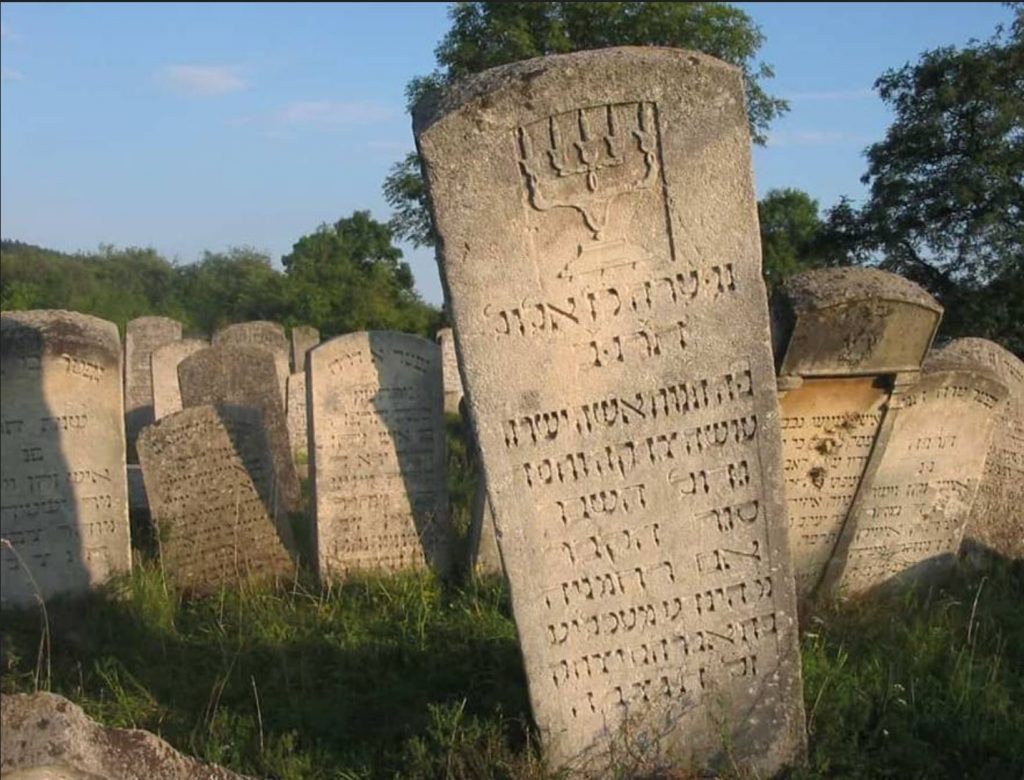
Having been influenced by the literary turn, few historians today would disagree that the way we structure our narratives influences our arguments and conclusions. Omer Bartov narrates his story in seven chapters. Starting with his family memoirs, he turns to the history of multiethnic Buczacz in the sixteenth century, and then leads the reader through the early modern and modern periods to World War I; he unfolds the picture of increasing ideological tensions in the interwar period, and then again under the Soviet occupation, and finally comes to the Holocaust. The theme of the Holocaust occupies the most substantial part of the book and is split among three chapters: “German Order,” “The Daily Life of Genocide,” and “Neighbors.” By the end of the book, post–World War II Buczacz emerges as a city that drastically differs from the Buczacz of the first chapter. Instead of three nationalities only Ukrainians remain. This Ukrainian Buczacz will have to go through decades of forgetting and constructing its history anew. The monoethnic city feels wrong to anyone familiar with its history but very natural to the people who live there now.
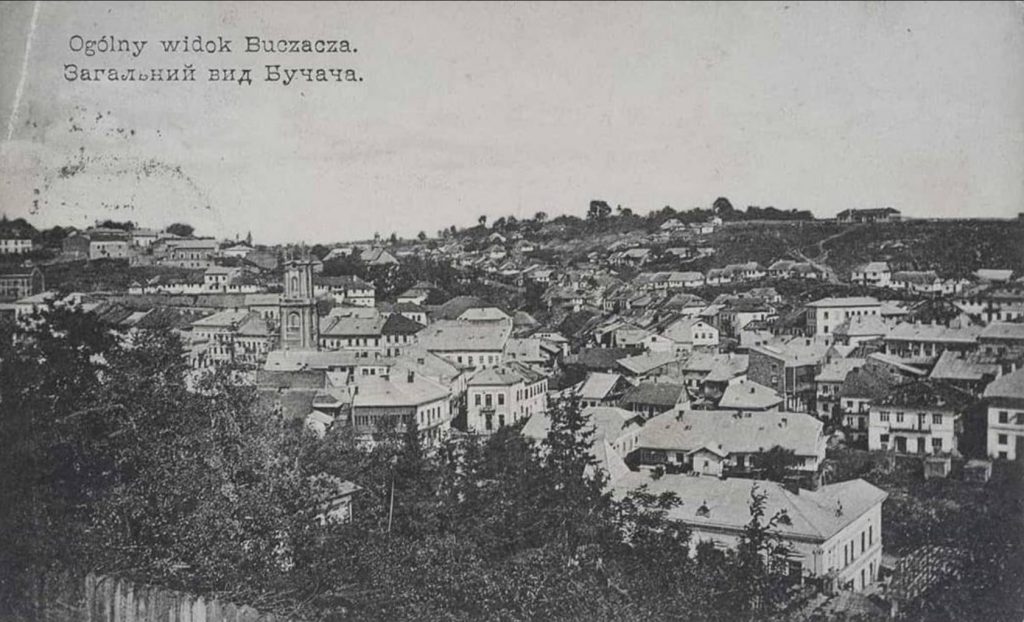
The focus of the book is on people, not on a concept or a theory. One of Bartov’s most important achievements is the close reading of his sources that returns agency to historical actors, no matter who they are. People stop being just victims of circumstances or representatives of abstract sociological categories. Instead we can appreciate the choices available to them, even if the selection was limited. Every morning someone in Buczacz could have been awakened by a knock on the door and found a Jewish family asking for help. The range of possible reactions (and hence available choices) went beyond providing or declining help. It included taking in Jewish neighbors to a barn today and chasing them away tomorrow; denouncing them to the police immediately; robbing and raping; adopting their children; adopting and baptizing them, and so on. Sometimes the same people could do all of the above. Bartov writes about the “intimacy of friendship, which transformed into the intimacy of violence” and argues that the closeness of community made violence more dramatic.[2]
The book describes the actions of the “neighbors” but avoids explaining them. Instead Bartov writes: “Yet the memory of goodness cannot erase the horrors enabled and perpetuated by the callous indifference, gratuitous violence, and homicidal avarice of neighbors, much of it lacking even the veneer of ideological motivation, however perverse and inhumane.”[3] The lack of ideological motivation, however, should not mean that any motivation was absent – that is, that people acted irrationally. Perhaps, some attention to social history would bring more clarity to this problem of motivation. For example, as a reader I wonder how many of those living in Buczacz during the war were actually neighbors or even knew each other? In other words, what was the impact on Buczacz of prewar mobility, numerous population transfers, and migration, including from neighboring villages?
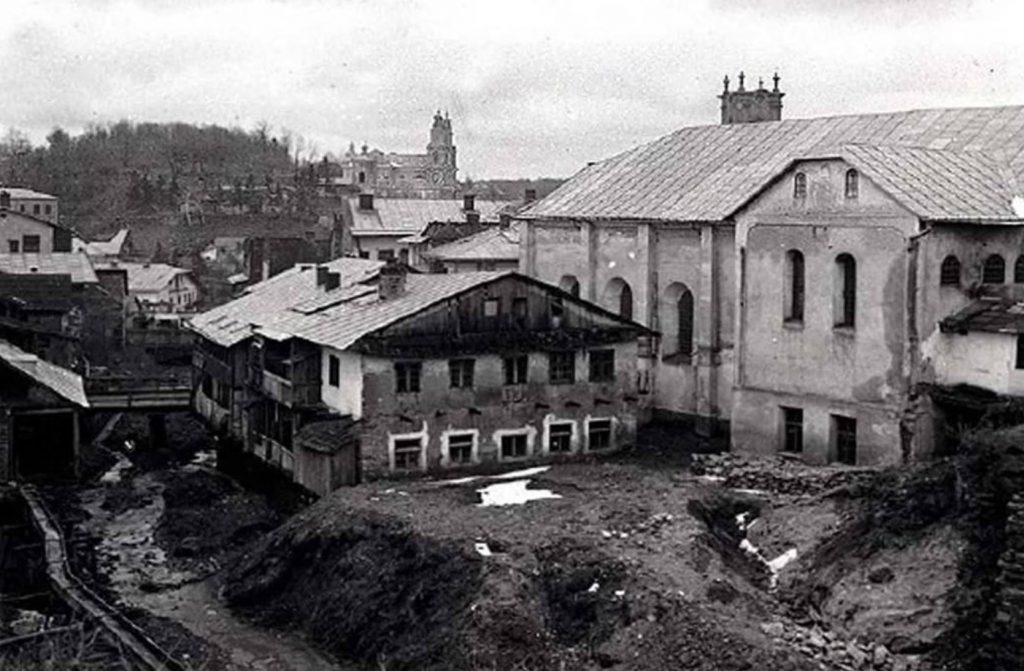
I also wonder what kind of sociological model of Buczacz in different periods of its existence justified Bartov’s selection of one source over others, and especially the degree of critical reading that he applied to the selected “voices.” For example, the story in chapter 2 about World War I is almost entirely based on the diary of Antony Siewiński, the local school’s principal. Bartov includes lengthy quotes from the diary but rarely offers any commentaries to Siewiński’s very biased account. How is he representative of the non-Jewish part of Buczacz’s population? And which part exactly? In the next chapter, Bartov uses the memoirs of a student at this same school, Stanisław Kowalski, who depicts a positive image of Buczacz as a multi- ethnic town. In contrast to his reading of Siewiński’s diary, Bartov reads this memoir with a critical eye, explaining that these recollections were “more nostalgia than a fact.” “In reality,” he affirms, “a Polish high school was a tool of national propaganda and homogenization of the community.”[4]
Generally speaking, instead of an “anatomy” of Buczacz’s social fabric that would be, perhaps, able to provide at least some rationality to the otherwise irrational account of neighborly violence, the book offers a longue durée narrative going back to the sixteenth century. But how long should the longue durée be to cover the roots of the Holocaust? The chapter covering the first few centuries of Buczacz’s multiethnic history is titled “Gathering Storm,” which creates a threatening atmosphere, a kind of suspense, right from the inception of the story. This chapter includes important historical milestones such as the Khmelnytsky uprising, the sieges of Buczacz by the Ottoman army in 1672 and 1675, the partitions of Poland, and Habsburg reforms. Bartov’s overview is based primarily on secondary literature and narrative sources, such as the vivid fiction of Shmuel Yosef Agnon (written a few centuries after the events) or Natan Gannover’s testimony about Khmelnytsky. He concludes with a grim predicament: “Three ethnoreligious groups were turning inward, not only as they had done before, by simply ignoring each other, but in a more aggressive, resentful, accusatory manner.”[5] It is hard to ignore Bartov’s intention of linking teleologically all of pre-twentieth-century history to the disastrous events of the twentieth century. From numerous events and sources, he chooses those that contribute to the picture of ever-growing insecurity and fear. Although one of the main objectives of the chapters dealing with the Holocaust is to reveal the complexity of the “perpetrator” role(s) and the importance of the logics of the situation on the ground, we do not find the same complexity in the preceding chapters.
The next most problematic aspect of Bartov’s story is fundamental to his methodological approach. It is the national paradigm, which Bartov applies indiscriminately throughout his longue durée history. The nation-centered approach holds the narrative together, serving as the backbone for what otherwise would be an internally incoherent and multifaceted account of life in as complex and dynamic a place as Galicia. The main protagonists of the book are Jews, Poles, and Ruthenians/Ukrainians – the well-bounded groups of “neighbors.” Nation is a key concept in genocide studies, but can it substitute for the careful reconstruction of the dynamics of life – social, economic, cultural, and personal interactions – in the course of a few centuries?
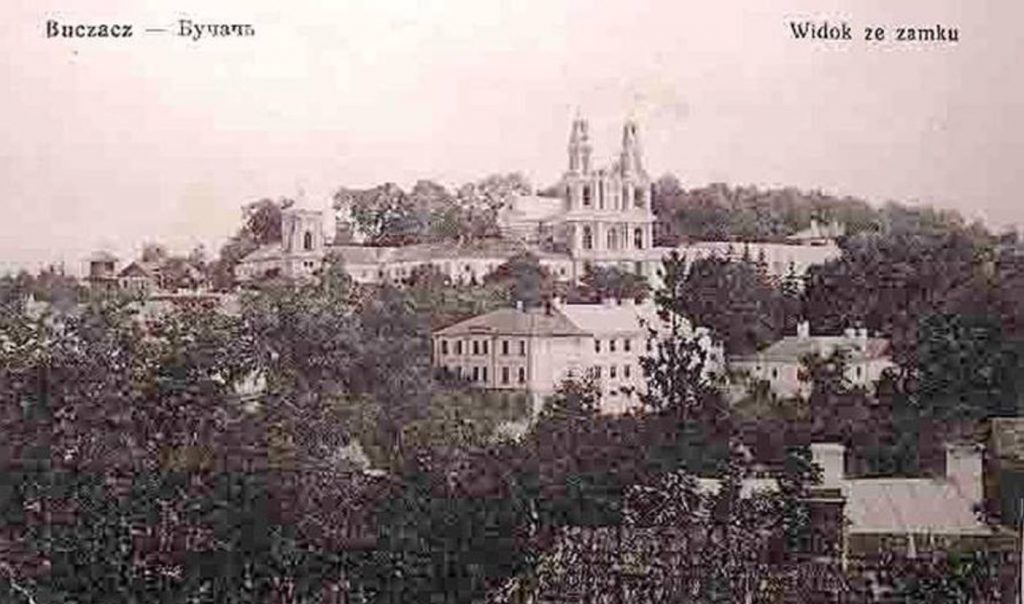
Students of the history of small towns in Galicia have recovered a striking picture of social dynamics that is never reducible to only one social role and identity. People played so many social roles simultaneously and contextually, and there were so many different but often semi-transparent lines of division. Even in the early twentieth century, the region’s population did not identify exclusively or primarily as Jews, Poles, or Ukrainians. Other forms of identification such as region (local or migrant), religion (or degree of religiosity), economic and social status informed their sense of self and group belonging. Family networks (kinship) played a great role in the small towns of Galicia. Intergroup interactions differed for each category: men and women, old and young, educated and uneducated. Within the Jewish community it mattered a lot whether one belonged to Maskilim, Hasidim, followers of a particular zaddik, and so on. At the turn of the twentieth century Galician society was characterized by plasticity and mobility, so some individuals were still able to choose “a nation” for themselves. Moreover, “nation” did not have a fixed meaning; language, general cultural orientation, or racial origin could play a key role in structuring group alignments, depending on the situation. Naturally, formalized divisions and alliances mattered in town politics and life, but no less than informal ideological or cultural distinctions.
It is hard to write a longue durée synthesis of the history of Jewish Galicia, especially when so many themes remain under researched (this is especially true in my field of social history). The few available books on the topic rely on sources in all the languages of the region and do not deploy a strictly national perspective, thus offering an interesting counternarrative to a teleological story of perpetual national animosity. For example, Börries Kuzmany has written about the small town of Brody, very similar to Buczacz.[6] Among other surprising episodes, he describes elections to the municipal board at the beginning of the nineteenth century, when Christian electors petitioned the provincial Austrian administration to allow Jews to have half of the seats on the board. De jure Jews were not citizens of Brody, but Christians on the Brody municipal board insisted that Jews constituted the majority of the town’s inhabitants, fulfilled all citizens’ obligations, and performed valuable functions for the city (connected to long-standing Jewish rights and their economic specialization).[7] The pragmatic needs of the community made these considerations more important than the legal possibility to exclude Jews from local politics.
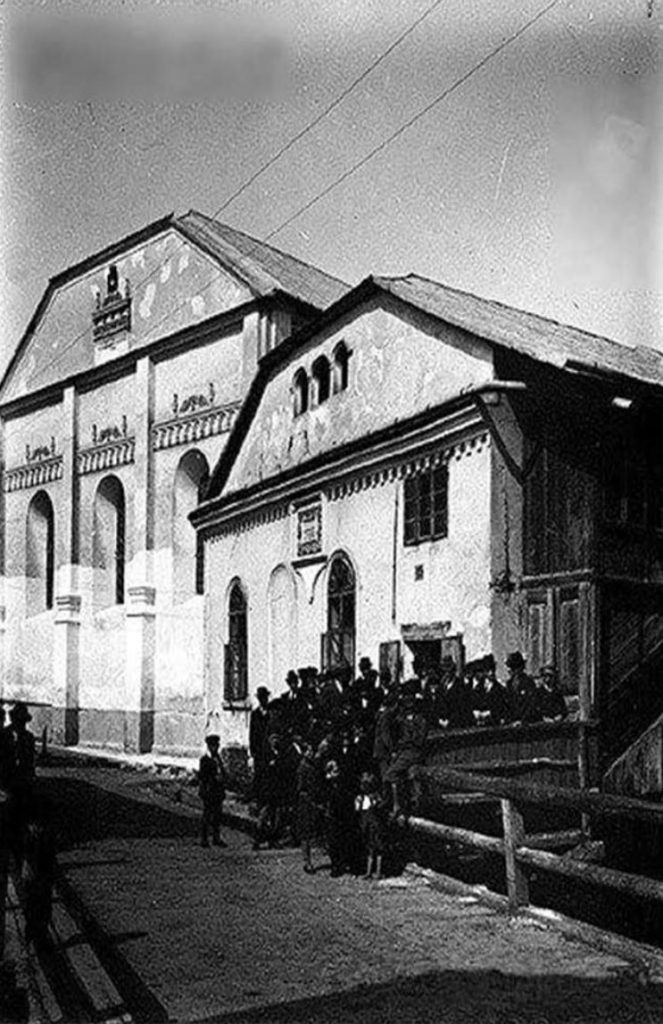
My own research into the history of another Galician town, Drohobycz, underscores the importance of social divisions within the Jewish community, including intragroup violence. Drohobycz was the center of the local oil industry. Jews of the town actively participated in its political life, sharing economic power and administrative responsibilities with local non-Jewish elites.[8] The incidents of violence that I discovered in my study reflected this pattern: they could occur both within the Jewish community and between Jews and their non-Jewish neighbors. Thus, violent conflicts were incited by competing Jewish entrepreneurs: Jewish workers from one factory attacked Christian workers from another factory, and vice versa. The best known example of the complex social and political dynamics in Drohobycz that defies explanation in essentialist national categories is the “Bloody elections” of 1911. The corrupt old Jewish political elite of the town and the vice-burgomaster Jakub Feuerstein prevented a Zionist candidate from being elected, which led to a large riot in which both the Ruthenian and Jewish populations of the town participated. Many of the rioters were killed by the Austrian police.[9] This example shows that one can explain the motivation of each group and its resort to violence only by exploring the specific context of each place and situation, where local economic interests, pragmatic considerations, and personal connections mattered. Arguably, this conclusion should apply to Bartov’s exploration of the Holocaust in Buczacz, from both the microhistory and longue durée perspectives that he combines in the book.
One must admit that the long history of ethnic coexistence in Galicia prior to World War I was never as peaceful as it appears today in the collective Ukrainian memory. It was full of bloody conflicts and violent events, and from the point of view of its victims these occurrences were no less disastrous than the conflicts of the twentieth century were for their victims. The motives, reasons, and explanations for these conflicts and cooperation were specific to their time and locality, but they also reflected some emerging common structural factors (economic competition, the consequences of growing labor migrations, and so on). When did nationalism become the leading factor provoking violence? When did it become the main political slogan and the key format for imagining social groupness? How did the complexity and hybridity of Galician society influence this universal trans-formation? Can we still see traces of other types of political divisions and social groupness, beyond national alliances, even during the world wars? And can we try to find some rational explanation for the actions of “neighbors” that goes beyond the long durée teleology of national animosity and takes into account the chaotic and illogical horror of the war?
I hope that Omer Bartov’s latest book will inspire new research into the Holocaust in Galicia and more attempts to write a prewar history of Buczacz from a synchronous perspective, as if we do not take for granted that the Holocaust is the end of this story.
Summary
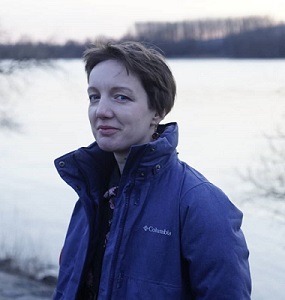 Vladyslava Moskalets reads Omer Bartov’s Anatomy of a Genocide: The Life and Death of a Town Called Buczacz (New York, 2018) from her perspective as a social historian of Galicia. She commends the author for returning agency to historical actors but questions his nondiscriminating and generalizing approach to constructing social groups. Moskalets believes that the book is more a longue durée synthesis than an “anatomy” of the complex society of Buczacz. Although it describes the actions of the homogenized “neighbors,” the book avoids explaining them.
Vladyslava Moskalets reads Omer Bartov’s Anatomy of a Genocide: The Life and Death of a Town Called Buczacz (New York, 2018) from her perspective as a social historian of Galicia. She commends the author for returning agency to historical actors but questions his nondiscriminating and generalizing approach to constructing social groups. Moskalets believes that the book is more a longue durée synthesis than an “anatomy” of the complex society of Buczacz. Although it describes the actions of the homogenized “neighbors,” the book avoids explaining them.
Omer Bartov's response is available here.
[1] Omer Bartov. Erased: Vanishing Traces of Jewish Galicia in Present-Day Ukraine. Princeton, 2007.
[2] Omer Bartov. Anatomy Of a Genocide: The Life and Death Of a Town Called Buczacz. New York, 2018. P. 133.
[3] Ibid. P. 245.
[4] Ibid. P. 91.
[5] Ibid. P. 36.
[6] Börries Kuzmany. Brody: A Galician Border City in the Long Nineteenth Century. Leiden, 2017.
[7] Ibid. P. 109.
[8] See Vladyslava Moskalets. The Importance of Connections: The Rise of Jewish Business Elites in Galicia // Jahrbuch für Wirtschaftsgeschichte. 2019. Vol. 60. No. 2. Pp. 1–24. 9 Joshua Shanes. Diaspora Nationalism and Jewish Identity in Habsburg Galicia. New York, 2012. P. 279.
[9] Joshua Shanes. Diaspora Nationalism and Jewish Identity in Habsburg Galicia. New York, 2012. P. 279.
NOTE: UJE does not necessarily endorse opinions expressed in articles and other materials published on its website and social media pages. Such materials are posted to promote discussion related to Ukrainian-Jewish interactions and relations. The website and social media pages will be places of information that reflect varied viewpoints.







